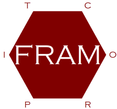the FUNCTIONAL RESONANCE
ANALYSIS METHOD
Quality Assurance and Support
FRAM as done versus FRAM as Imagined?
There has, in recent years, been a growing interest in the use of the FRAM by various groups of professionals from, e.g., Aviation, Healthcare, and Construction. One of the “barriers” to its wider adoption has been the apparent complexity of the full size models produced and published in some of these studies, in particular their veritable “spaghetti” of hexagons and their couplings.
Erik Hollnagel and many others have been instrumental in setting up a number of initiatives to try and support / alleviate these misgivings, such as this website, the FMV software and the annual FRAMily meetings. The growing demand for this support has now encouraged us to go further, to address increasing user needs.
For example Pedro Ferreira is currently setting up an accessible repository of FRAM models and examples of applications which a number of groups have been asking for. Link is here.
There is also a pressure try meet the call for more formal courses. In Australia Erik Hollnagel has been closely involved in preparing FRAM courses and conducted some himself. The same is the case for current courses in the UK, Denmark, and Sweden.
It is inevitable that there will be more informal and "spontaneous" course offerings. FRAM is, of course, in the public domain and in principle anyone can offer courses and consultancy support on the FRAM. But seeing how other popular techniques, such as Bow Ties, Risk Matrices and Accimaps, have developed a plethora of differing and confusing idiosyncratic, often commercial tweaking, we believe that it would be useful to have a more formal way to peer review and ensure a “kite mark” standard (certification?) to support companies, institutions, and individuals keen to see the method further developed. It reflects discussions we have had over the years about how to ensure that a “genuine” FRAM approach is adopted, applied and not misused for purposes it was not intended for.
FRAMsynt
We have consequently established a formal focus - FRAMsynt - to provide some kind of quality assurance for materials, courses and publications.
"FRAMsynt” (a Swedish word which in English means “farsighted”) is a non-profit (and very small) company that has been established to look after FRAM, especially courses in the method and the use and further development of the FRAM Model Visualiser (FMV). With regard to courses FRAMsynt can hopefully have a dual role.
- One is to support courses through the resources that are linked to the www.functionalresonance.com website.
- The other is to offer to look at proposed courses to ensure that they provide a fair introduction to the method that is consistent with the underlying principles – in some sense an approval of the quality. This could be formalised to meet the demands of today’s continuing professional development (CPD) schemes.
It is, of course, entirely voluntary for anyone to make use of these opportunities. But we think it is in the best interest of all present and future users of the FRAM to try to maintain a high standard in how the method is taught and used."
Erik Hollnagel, Rees Hill, David Slater
(Contact sensei@functionalresonance.com)
